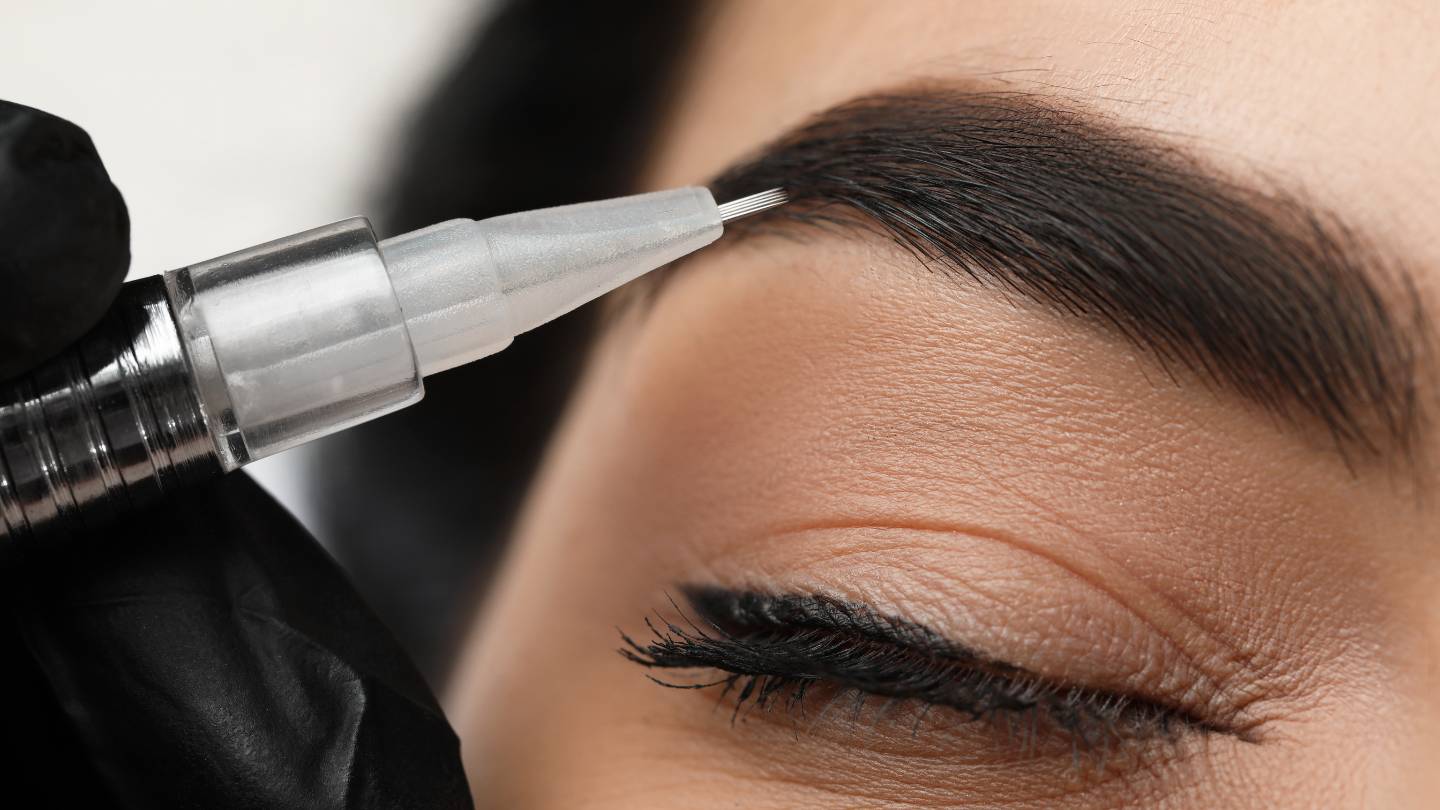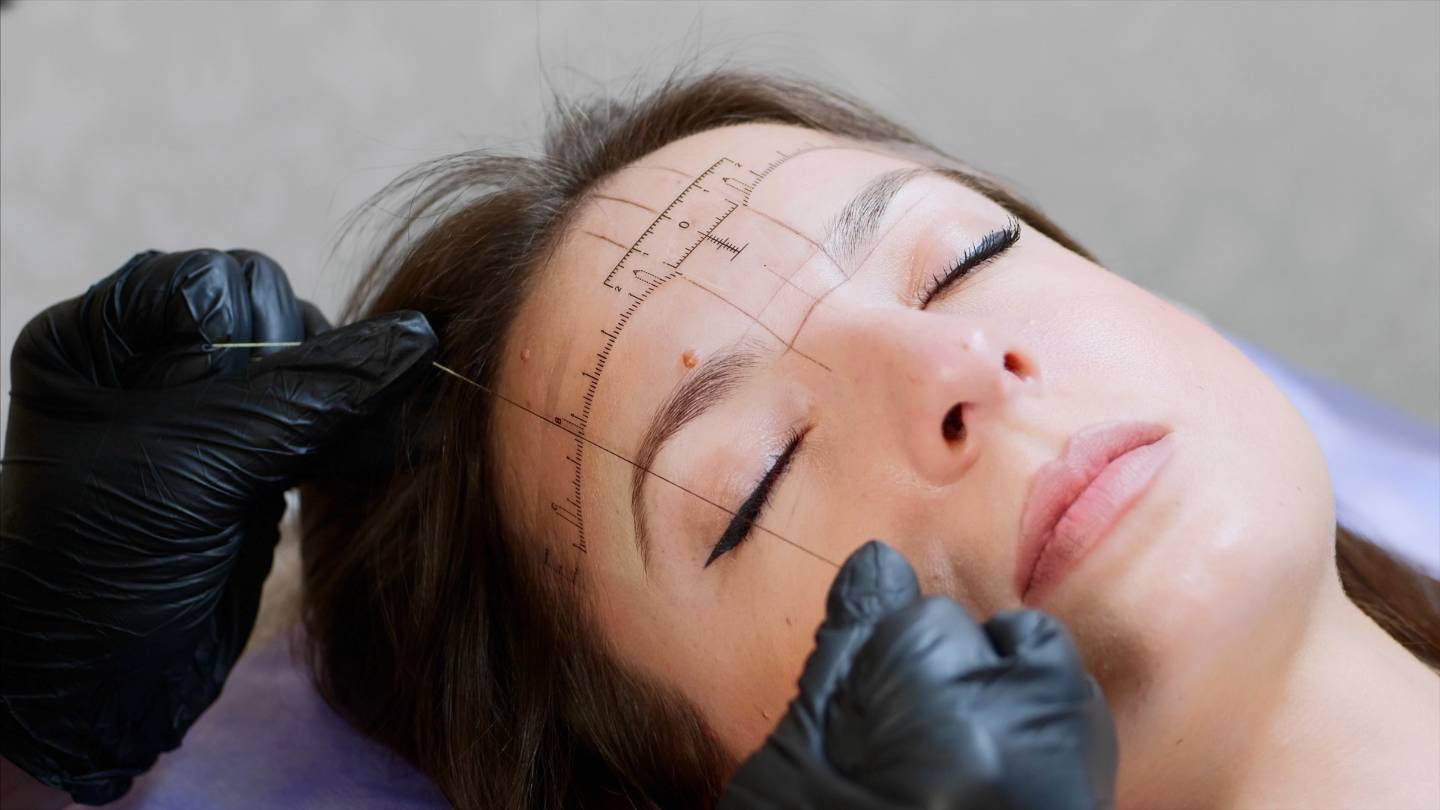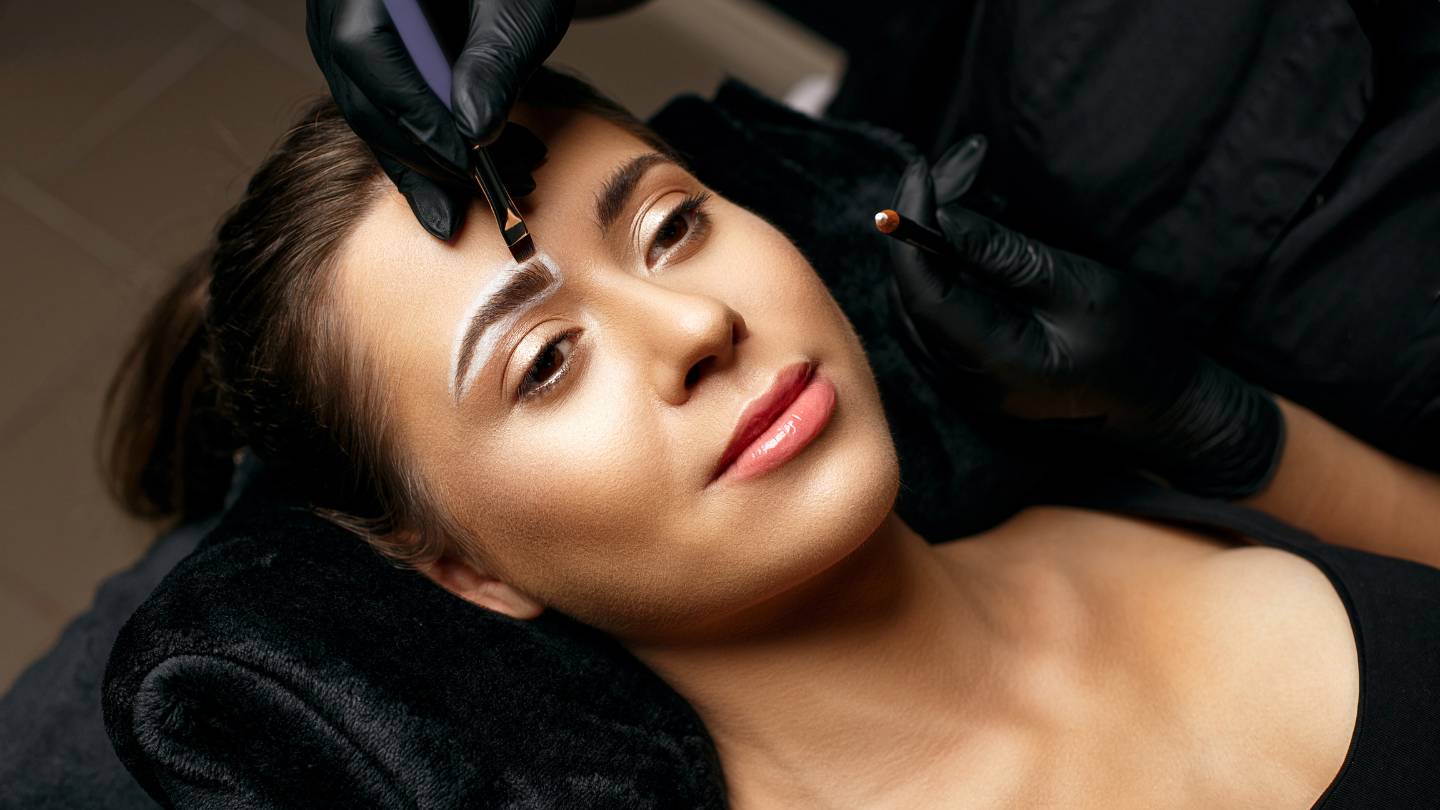Embarking on the journey to enhance one's features through cosmetic procedures has become increasingly popular, with microblading emerging as a sought-after technique in beauty enhancement.
The question on many minds is, "Can anyone get microblading?" This intricate procedure involves applying semi-permanent pigment to the eyebrows, creating a fuller and more defined look.
Unlike traditional eyebrow tattooing, microblading is a specialized art form performed by skilled technicians. However, the eligibility for microblading is not universal, as individual factors such as skin type, medical history, and personal preferences play a crucial role.
In this quest for the perfect brows, understanding the nuances of microblading and its suitability for different individuals is key to making informed decisions on the path to aesthetic enhancement.
Be Ready For Eyebrow Microblading With These Essentials
- It is recommended to wait three weeks before the procedure and four weeks following to have Botox treatments.
- The brows will peel faster since the chemicals will travel beneath the skin, so avoid getting a chemical peel in the 60 days leading up to or following the surgery.
- Avoid using Retin-A, Retinol, or any other anti-aging or acne cream, as well as acid-containing serums, as they can potentially fade brows prematurely.
- Keep off the weights and cardio the day of (and for at least two weeks following) the procedure.
- On the day before the surgery, avoid getting a sunburn or tanning.
- No waxing or dying within three days of the treatment
- Within 48 hours before the procedure, discontinue using aspirin, Niacin, vitamin E, fish oils, CoQ10, and ibuprofen.
- Leave out caffeine and alcohol at least 24 hours before surgery.
Why Isn't Microblading For Everyone?
One of the main reasons permanent makeup is available is that it facilitates our daily routines. We can finally ditch the hours-long rituals and countless amounts of money spent on makeup thanks to microblading.
If we are looking for a way to regain confidence and accept ourselves as we are, microblading is a fantastic option.
That is why the fact that permanent makeup isn't available to everyone is so unfortunate.
Microblading isn't an option for everyone because of health issues and skin concerns. Of course, some people, like those who are pregnant or have recently had Botox, only have to wait a few weeks or months.
Commit this list of clients who aren't clients to memory if you haven't already. And don't be shy about saying no to therapy. Remember, their and your safety are paramount.
In Such A Case, Microblading May Not Be The Best Option For You
People Under 18
We cannot administer the microblading technique to anyone under 18, regardless of whether they have parental consent.
Being Pregnant Or Nursing
Getting microblading done while pregnant or nursing is not a good idea. Unlike tattoo pigments, microblading pigments have not been approved by the FDA. Not because they haven't been tested or are dangerous for adults; the FDA needs to be more relaxed about regulating them.
The subject of scant investigation has been whether the pigment is good for neonates and developing foetuses.
One more consideration. Due to the lack of investigation, it cannot be trusted. The infection risk is another reason microblading is not a good idea during pregnancy or nursing. If you follow the aftercare instructions and choose a controlled, qualified, & certified artist, you almost certainly won't have an infection.
However, if there is even a slight chance that you could have an infection, the disease could pass on to an unborn baby, so you might not have access to the medications needed to treat it. If you are expecting a child, are trying to conceive, or are nursing, you must wait until after you have completed breastfeeding before having microblading done.
The body is more vulnerable to infections because of hormonal fluctuations. Your skin could transform, with potentially surprising consequences.
Autoimmune Disorder
Microblading is not a good idea for people with autoimmune diseases, including lupus, celiac disease, RA, Hashimoto's, or any of the others that are mentioned below. This is because microblading risks complications that may arise while the skin heals. Microblading involves drawing hair-like strokes onto the brow area using a small blade.
Since the artist will make tiny incisions, the skin surrounding your eyebrows will naturally recover after a skin reduction. For more information on how your skin will heal after getting microblading, check out this post we wrote for our blog.
The autoimmune disease or the medications used to treat it can impede a person's ability to recover effectively. Stay away from microblading if you care about your health and safety. Find out from your doctor if it's safe to do so if you're concerned. Disease infection is more likely to occur in those with compromised immune systems.
Diabetes
Microblading should not be done on anyone with diabetes of either type without first obtaining a doctor's clearance. Reasons for this include many of those already stated about autoimmune illnesses. Hyperglycemia may slow down the healing process and raise the risk of infection after microblading.
Verify that the glucose levels in your blood were within the usual range a few days before your microblading appointment if your doctor of choice has approved the procedure.
Your blood sugar levels might go up or down throughout the interview due to the long duration, potential discomfort, and "stressful" nature of the experience. You can expect a slower-than-usual healing time and a higher risk of infection after microblading.
Hypertrophic Or Keloidal Scarring
You should avoid microblading completely or perform it at your own risk if you have previous instances of keloid scarring. If you have a history of keloid scars, your artist cannot promise that your new brows will heal without leaving a permanent mark.
This is unfortunate, but it could happen. We can't promise that our clients won't have keloid scars if they have a family history of the condition, even though we include a scar-prevention ointment in their aftercare kits called Following Inked Aftercare Lotion.
People who are prone to keloids may experience scarring after getting permanent makeup applied because the procedure includes puncturing the skin.
Injectable And Botox
Injectables or Botox should be administered at most 30 days before microblading. Because Botox is a potent neurotoxin that blocks the neuromuscular junction, as well as because it requires time to bind to the right receptors in the body, this is the result.
If the conditions under which the experiment will be carried out are disturbed, the results could be affected, or even the client's health could be endangered. Microblading is best done at least 30 days after getting Botox, as you'll want the side effects of the injection to have fully worn off before you proceed.
Since the injected substances had fully settled on the face muscles two weeks after receiving Botox in the brow area, it is best to wait before microblading. You should wait two weeks after getting Botox around your brow area before undergoing microblading.
Seizures And Epilepsy
People with epilepsy or a history of seizures should not get microblading done. The reason is that microblading can exacerbate symptoms at any point. Thus, there are better choices for people with these conditions.
Things like bright lights, anxiety, and sleep deprivation are common causes. Microblading appointments typically include the artist constantly shining a fluorescent ring light on the customer to check their progress.
This way, the artist can ensure they're happy with the final product. Customers with light-sensitive eyes can purchase tanning goggles, but it doesn't mean the bed won't still provoke seizures for those who are prone to them.
On top of that, a customer may experience stress and, ultimately, a seizure if the microblading operation is too painful. Lastly, the artists have yet to determine if the client's seizure medicine can impede their recuperation period.
Before deciding to get microblading done, it is vital to consult all your physicians in this circumstance. You should see your doctor to find out if this is safe for you to do because of the effects that many medications have on the body.
Chemotherapy And Radiation
Cancer patients often have hair loss as a side effect of chemotherapy, making microblading a popular cosmetic operation for these individuals.
Thanks to microblading, We can help cancer patients when they need it most, and we are eternally thankful. However, microblading may not be safe for people undergoing chemotherapy, so it's best to talk to your doctor before getting the procedure done.
There are several reasons for this, but one of them is that chemotherapy may result in neutropenia, which makes it harder to heal after microblading and increases your risk of infection. A serious compromise has been made to your immune system.
Although permanent makeup is a great way to improve your appearance, we cannot treat anyone undergoing chemotherapy without a doctor's note permitting us. Once you have obtained clearance from your oncologist, we can proceed with scheduling your visit. For those who have triumphed over cancer, permanent makeup is a fantastic alternative.
All of the problems that could arise from microblading are not limited to those mentioned so far.
These are the most common problems artists avoid for their client's sake. If you have any concerns or suffer from a health issue that is not listed in this article, it is recommended that you visit your doctor before getting microblading done.
Because we are artists rather than doctors, we can't be aware of every illness that could create problems with microblading, as we indicated before. We have yet to complete the eight or more years of schooling necessary to earn a medical degree, even though skilled artists generally know who they can work on.
Conclusion
To achieve thicker, more defined eyebrows, many choose to have microblading, a cosmetic technique that uses semi-permanent pigment applied to the skin. On the other hand, not everyone is a good candidate for microblading because of variables like skin tone, medical history, and personal taste.
In order to be prepared for eyebrow microblading, it is advised to wait three weeks before the procedure and four weeks after Botox treatments. Additionally, you should avoid using any creams that claim to fight against ageing or acne, as well as weight training and cardiovascular exercise. Sunburns and tanning are also to be avoided, as are waxing and dying within three days. Certain medications should be stopped 48 hours before surgery, and caffeine and alcohol should be avoided 24 hours prior.
Due to health problems and skin disorders, microblading may not be appropriate for all individuals. You might need to wait a few weeks or months if you're pregnant or if you just got Botox. If you are under the age of 18, pregnant, or have an autoimmune problem, microblading might not be the way to go.
No one should ever get microblading if they have diabetes, hypertrophic or keloidal scarring, epilepsy, seizures, radiation, chemotherapy, or cancer. Getting a doctor's okay before the surgery is crucial for maintaining healthy blood sugar levels and avoiding problems.
One more thing that can happen with microblading is keloid scarring. The healing process of new brows may or may not leave a lasting mark. You should provide injectables or Botox at least 30 days before microblading so the negative effects can entirely fade.
Due to the risk of worsened symptoms and side effects, microblading should not be done on those who have epilepsy or a history of seizures. To make sure the procedure is safe for you, it's important to talk to your doctor before it happens.
Microblading has become a popular cosmetic procedure due to the high number of cancer patients who suffer from hair loss as a result of chemotherapy. Chemotherapy can cause neutropenia, which makes healing more difficult and increases the risk of infection; therefore, it is crucial to talk to your doctor before undergoing the operation.
It is crucial to talk to your doctor before getting microblading done, as even experienced artists may not be aware of all the conditions that could cause complications.
Content Summary
- Microblading is a semi-permanent cosmetic procedure enhancing eyebrows.
- It's a specialised art form requiring skilled technicians.
- Eligibility for microblading varies based on individual factors.
- Skin type, medical history, and personal preferences affect suitability.
- Certain pre-procedure requirements include avoiding Botox treatments for three weeks.
- Chemical peels should be avoided 60 days before and after microblading.
- Retin-A, Retinol, and other anti-aging/acne creams may prematurely fade brows.
- Exercise should be avoided on the day of the procedure.
- Sunburn or tanning is not recommended before microblading.
- Waxing or dying eyebrows should be avoided three days prior.
- Aspirin, Niacin, vitamin E, and ibuprofen should be discontinued 48 hours before.
- Caffeine and alcohol should be avoided at least 24 hours before the procedure.
- Microblading isn't suitable for everyone due to health and skin concerns.
- Persons under 18 are not eligible for microblading.
- Pregnant or nursing women should avoid microblading.
- People with autoimmune disorders are advised against microblading.
- Those with diabetes need doctor clearance before considering microblading.
- Individuals prone to hypertrophic or keloidal scarring should avoid microblading.
- Recent recipients of injectables or Botox must wait before microblading.
- People with epilepsy or seizure disorders should consult doctors before microblading.
- Cancer patients undergoing chemotherapy or radiation need medical clearance.
- Microblading is not recommended during active cancer treatments.
- Those undergoing chemotherapy should seek a doctor's advice before microblading.
- Microblading requires careful consideration of individual health conditions.
- Doctor consultations are crucial for those with unlisted health issues.
- Microblading artists require specific health information for client safety.
- Medical clearance is essential for certain health conditions before microblading.
- Healing and recovery from microblading can be affected by medications.
- Understanding personal health risks is key before opting for microblading.
- Microblading can enhance appearance but isn't suitable for all medical conditions.
- Professional microblading artists prioritise client health and safety.
- A detailed medical history review is necessary before microblading procedures.
- Individual healing capacity influences microblading suitability.
- Not all skin types are ideal for microblading, affecting final results.
- Hormonal fluctuations can impact microblading outcomes.
- A comprehensive consultation is necessary to assess microblading eligibility.
- Microblading offers aesthetic enhancement with specific health considerations.
- Personal lifestyle factors may also influence microblading suitability.
- Pre-procedure care is crucial for optimal microblading results.
- Awareness of potential risks and complications is essential for microblading clients.
- Potential clients should be informed about microblading limitations.
- Professional guidance is key for those considering microblading.
- Microblading may require lifestyle adjustments before and after the procedure.
- Understanding the procedure's limitations helps set realistic expectations.
- Microblading artists should communicate potential risks to clients.
- Client education on microblading is important for informed decisions.
- Tailored advice based on individual health is essential in microblading.
- Microblading decisions should be made with comprehensive health information.
- Personal health and safety should be prioritised when considering microblading.
- Informed consent is crucial for anyone undergoing microblading.
Frequently Asked Questions
As with any cosmetic procedure, there are potential risks and side effects. These may include infection, allergic reactions, or dissatisfaction with the results. Choosing a skilled and experienced microblading artist and following aftercare instructions can minimise these risks.
Research is crucial when selecting a microblading artist. Look for professionals with proper training, certification, and a portfolio of previous work. Reading reviews and asking for recommendations can also help make an informed decision.
Individuals with certain skin conditions, such as eczema, psoriasis, or active acne, may not be suitable candidates for microblading. It's essential to discuss any existing skin conditions with the microblading artist during the consultation.
Microblading costs vary depending on location, the artist's experience, and the specific services offered. It can range from $300 to $800 or more on average.
Proper aftercare is essential for maintaining the longevity and appearance of microbladed eyebrows. This includes avoiding excessive sun exposure, using recommended aftercare products, and scheduling touch-up appointments as needed.



